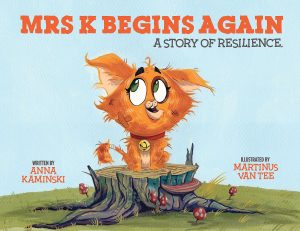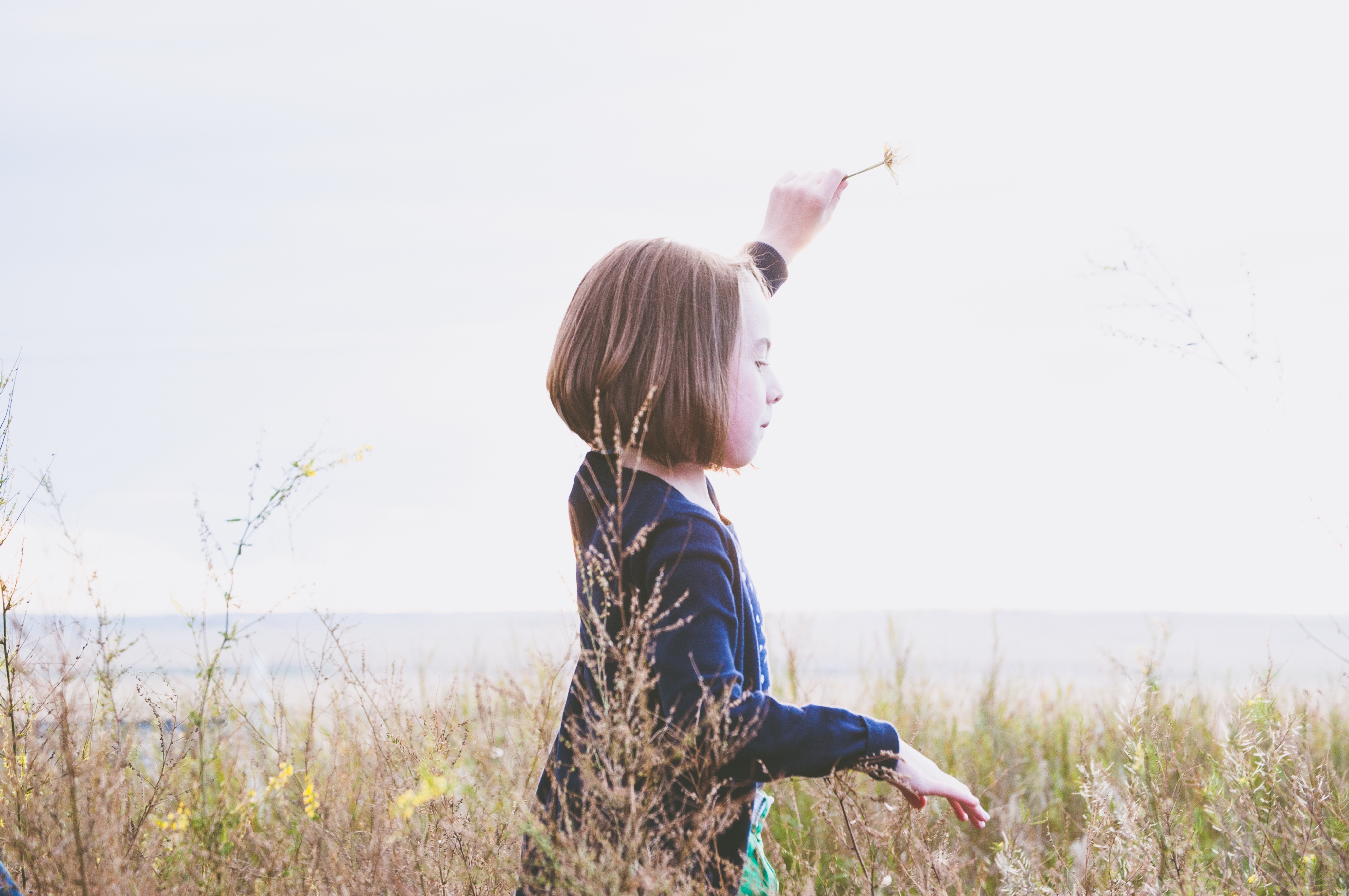Let me introduce myself
My name is Anna Kaminski and every time I’m asked, I feel absolutely delighted to say that I teach mindfulness and write children’s mindfulness books. I can confidently say I’m doing my dream job!
I have been studying psychology for over a decade and stumbled across mindfulness while reviewing literature on ADHD. I have been excited about it ever since as it is perfectly aligned with my goal of helping children be well.
Mindfulness
Mindfulness has become a bit of a buzz word, which makes it tempting to focus on its superficial meaning. It is however a concept worth exploring deeper as it encompasses much more than ‘being in the now’.
It’s likely that the audience of Inner Seed is familiar with mindfulness, so I will allow myself not to overly elaborate on its definition. Briefly, mindfulness is being aware of what is present in the very moment, whether in or outside of the body. It is no ordinary awareness however, as it is characterised by suspension of judgment and limited attachment, kindness towards the self and others, curiosity, openness, gratitude and acceptance, amongst others traits.
One of the reasons why mindfulness has gained popularity recently is the availability of scientific evidence that proves its positive effects on cognitive functioning and mental health. For thousands of years people have enjoyed those benefits, which include decreased stress and anxiety as well as improved concentration and mood, just to name a few. I, both personally and professionally, rely on daily practice for a sense of clarity, stability, happiness and inspiration. Every day I teach mindfulness principles to my young children. No, it doesn’t always go perfectly and no, my house isn’t a peaceful haven. Yet!
Not too young?
Since I started teaching mindfulness to people of various ages, I have known that it is a life skill that everyone should be equipped with as early as possible. Mindfulness practice activates the prefrontal cortex of the brain, an area involved in attention management, analysis, self-control, morality and other sophisticated cognitive functions. A rapidly developing brain is easily influenced by experience, which is one reason why starting early is recommended. Providing a child with an adaptive way of coping (for example focusing on the body during a challenging situation and walking away instead of screaming) is invaluable. In the adult world those coping skills might mean a difference between keeping and losing a relationship or a job! Whether through modelling it yourself, informal conversations about mindful living or direct teaching, it pays to start as soon as you can. If you practice, your children will benefit no matter what age they are. In fact, studies show that the entire family environment is positively impacted by one person’s practice.
Back to school.
How can mindfulness serve us now, during this busy time of the year? As exciting as new beginnings can be, for some kids and adults September brings anxiety about meeting new friends and teachers, academic challenges and/or sense of sadness and loss about family left behind in the home country. All in all, it can be an emotional period for many. Moving self-care to the top of our priority list is especially important as stress, pressure, duties and distractions mount. Apart from the usual things you might do to nurture yourself and your child (having a meal with friends, taking a soothing bath, spending time outside, listening to favourite music, for instance), you might like to consider mindfulness practice as another way to unwind and ground yourself.
Here are a few ideas you might like to try with your kids:
- When you arrive at school, before getting out of the car, notice sensations in your body (temperature, tension, movement etc). Take 5 deep breaths. Make sure you exhale fully from your belly
- Walk to school mindfully: notice the sensations in your body as you move. Perhaps hardness of the soles of the shoes? Tightness in your lower back? What else is there?
- Take a few deep breaths when in bed at night. Make sure you exhale fully from your belly.
- Have a ‘gratitude talk’ at breakfast every morning and notice how it makes you feel in your body (for example have each family member name 3 things they are grateful for that day)
- Listen to pre-recorded guided practice at bedtime (you might like to check out applications like Headspace, Calm or Insight Timer, for both adults and kids, or simply search for guided practices on YouTube and choose what suits you)
- Have a mindful bite during one meal a day (for a moment pay attention to the colour, texture, shape, smell, taste and other features of the food you’re eating)
As you know, high frequency of action helps establish a habit. It is a good idea therefore to initially choose one manageable thing that fits well into the family’s routine, and focus on practicing it daily. Start small. To make it easier try to:
- Make it part of daily routine, which will make it easier to remember to do it (for example every day at dinner time)
- If possible, practice in various settings like school, home, the beach etc. Try talking to your child’s teacher about introducing mindfulness practice into the classroom – she’ll be grateful to you before the term is up!
- Make it as interesting as possible, especially for young kids (by incorporating toys like Hoberman’s sphere to demonstrate breathing or by visualizing roses to smell and candles to blow)
- Make it relevant. Explain, especially to older kids and adults, what benefits can be derived from mindfulness practice
- Talk about celebrities (adult, child and teen) who do it. You will be surprised how many sports stars and actors practice mindfulness and how surprising kids find that!
- Model! Familiar with ‘do as I say, not as I do’? Imagine if you told you spouse and kids to breathe AND did it yourself! J
My book
As we talk about the how of introducing mindfulness, I wanted to mention my book “Mrs K Begins Again. A story of Resilience”. Most kids like funny stories, right? Looking for ways to talk to children about mindfulness led me to write a series of mindfulness-themed books. “Mrs K Begins Again” is a humorous story of a cat, which introduces breathing as a way of dealing with difficult emotions. It provokes a conversation about coping with setbacks, which is often challenging for kids. The message the book conveys is that disappointment is a part of life and we have the innate capacity to deal with it.
The second book “I think I Can’t Sleep”, soon to be available, introduces children to the topic of thoughts. We all have many of them daily, sometimes causing trouble! The book helps children understand the activity in their mind and gives them a tool to deal with situations where thinking gets a little out of hand.
“Mrs K Begins Again” can be purchased through souq.com and Amazon for now, but more buying options are coming very soon. You can follow LivingHereNow on Facebook for updates.
Lastly…
It is my hope that this article is helpful to you in some way. Perhaps you learnt something new or it inspired you to try to practice: whatever it is, please feel free to share your experience with me.
I’m grateful for your time and I wish you and your children a mindful academic year.

About the author:
Anna Kaminski, M.A. Psych, is a mindfulness educator. In her work she combines psychology and mindfulness, for the greatest impact on well-being. She works with children and adults.
For information about mindfulness, psychology and local happenings in the field, follow LivingHereNow on Facebook.
You can also check out her website www.LivingHereNow.org and contact her on [email protected]. She always welcomes comments, feedback and questions.

Book can be purchased from, ‘Borders, Magrudy’s and Kinokuniya across the UAE very soon’.







Leave A Comment
You must be logged in to post a comment.